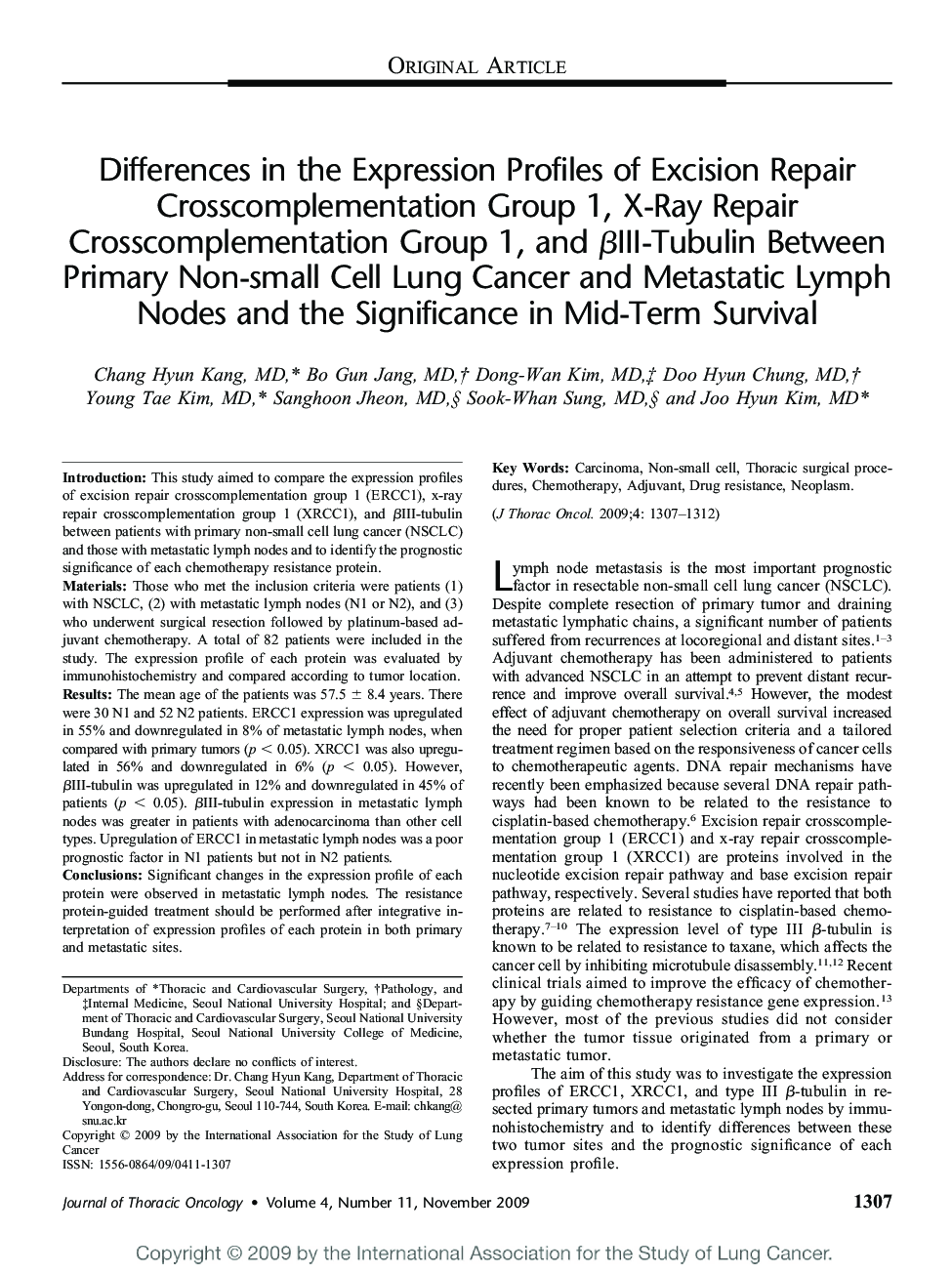| Article ID | Journal | Published Year | Pages | File Type |
|---|---|---|---|---|
| 3990625 | Journal of Thoracic Oncology | 2009 | 6 Pages |
IntroductionThis study aimed to compare the expression profiles of excision repair crosscomplementation group 1 (ERCC1), x-ray repair crosscomplementation group 1 (XRCC1), and βIII-tubulin between patients with primary non-small cell lung cancer (NSCLC) and those with metastatic lymph nodes and to identify the prognostic significance of each chemotherapy resistance protein.MaterialsThose who met the inclusion criteria were patients (1) with NSCLC, (2) with metastatic lymph nodes (N1 or N2), and (3) who underwent surgical resection followed by platinum-based adjuvant chemotherapy. A total of 82 patients were included in the study. The expression profile of each protein was evaluated by immunohistochemistry and compared according to tumor location.ResultsThe mean age of the patients was 57.5 ± 8.4 years. There were 30 N1 and 52 N2 patients. ERCC1 expression was upregulated in 55% and downregulated in 8% of metastatic lymph nodes, when compared with primary tumors (p < 0.05). XRCC1 was also upregulated in 56% and downregulated in 6% (p < 0.05). However, βIII-tubulin was upregulated in 12% and downregulated in 45% of patients (p < 0.05). βIII-tubulin expression in metastatic lymph nodes was greater in patients with adenocarcinoma than other cell types. Upregulation of ERCC1 in metastatic lymph nodes was a poor prognostic factor in N1 patients but not in N2 patients.ConclusionsSignificant changes in the expression profile of each protein were observed in metastatic lymph nodes. The resistance protein-guided treatment should be performed after integrative interpretation of expression profiles of each protein in both primary and metastatic sites.
